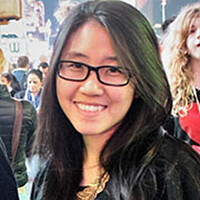San Jose State University investigates after swastikas found on campus
Loading...
On Monday night, San Jose State University students in California were alarmed to find Swastika signs displayed in the common areas of two dorms, with hateful speech scribbled alongside the symbols.
The two incidents were unrelated, according to the campus police's investigation, despite happening around the same time. University officials announced Thursday that the two male students who committed the act, whose names and ages were not released, said they did it as “a joke.”
“We are very concerned about how our [students in particular], but our entire community are feeling and responding to this incident,” university president Mary Papazian said, according to The Mercury News.
One of the two swastikas was written on a communal whiteboard, while the other, in a separate building, was formed out of student name tags and paired with an anti-Semitic message. After identifying the student responsible for the message, police "determined that this act, while bias-based, targeted no one in particular and is not by definition a hate crime," Dr. Papazian wrote in an all-campus email.
“Sadly we see these at campuses across the country," she added. “San Jose State is actually very average in terms of these kinds of incidents occurring, and I think as a broader society, it raises questions about how we actually talk to each other as communities.”
Such incidents, as Papazian notes, appear to be occurring with rising frequency. According to the Anti-Defamation League (ADL), an international civil rights group focused on combatting anti-Semitism, there were 90 anti-Semitic cases (including assaults, vandalism, and harrassment) reported at 60 US college campuses in 2015, compared to 47 cases on 43 campuses in 2014. In 2015, a Trinity College study found that 54 percent of 1,157 Jewish students surveyed throughout the United States said they experienced anti-Semitism, however they defined it, on their campus in the first six months of the 2013-2014 academic year.
In 2015, for example, swastikas were found spray-painted on various campuses, often on days of historic significance for Jewish students, such as the anniversary of the liberation of the Auschwitz concentration camps near the end of World War II, now commemorated as International Holocaust Remembrance Day.
But beyond overt anti-Semitic actions, such as graffiti, many schools are now struggling to define what constitutes anti-Semitic attitudes, and what falls under protected speech, particularly as the Boycott, Divestment and Sanctions (BDS) movement gains supporters among students and faculty. The BDS campaign aims to pressure Israeli companies over the country's record on Palestinians' rights, but critics argue that supporters' criticism of the state of Israel itself sometimes veers into anti-Semitism, or crosses a line from debate to intimidation.
But some schools' attempts to respond to the debate over alleged anti-Semitism have found themselves embroiled in yet more controversy.
When the University of California Board of Regents adopted "Principles Against Intolerance" last week, it became the first public university in the US to do something many say was long overdue: condemn anti-Semitism amid a growing boycott movement against Israeli institutions," as The Christian Science Monitor reported in March:
"Anti-Semitism, anti-Semitic forms of anti-Zionism and other forms of discrimination have no place at the University of California," reads the Board's unanimously approved statement, noting that "expressions of anti-Semitism are more coded and difficult to identify" than in the past.
Many students critical of Israeli policies, however, say that that same ambiguity is why blanket statements against anti-Semitism or anti-Zionism may do more harm than good. The vague statement might limit academics' ability to teach and debate the history of Judaism and Israel, or protest the state's treatment of Palestinians, they say, although the statement does not prescribe any punishments for those who do.
Future challenges for universities, however, may lie in internet comments. The ADL report emphasizes that while, overall, anti-Semitic incidents throughout the US are low, compared to the organization's records since 1979, a higher percentage are violent, or taking place online.
“While that decrease is encouraging, it is troubling that on average there is one anti-Semitic assault reported in this country every week, and at least two anti-Jewish incidents on average every single day,” said Marvin D. Nathan, the national chair of the ADL, in a press release. “These numbers do not even account for all of the online harassment we see every hour on social media, which is so widespread it is difficult to quantify.”







